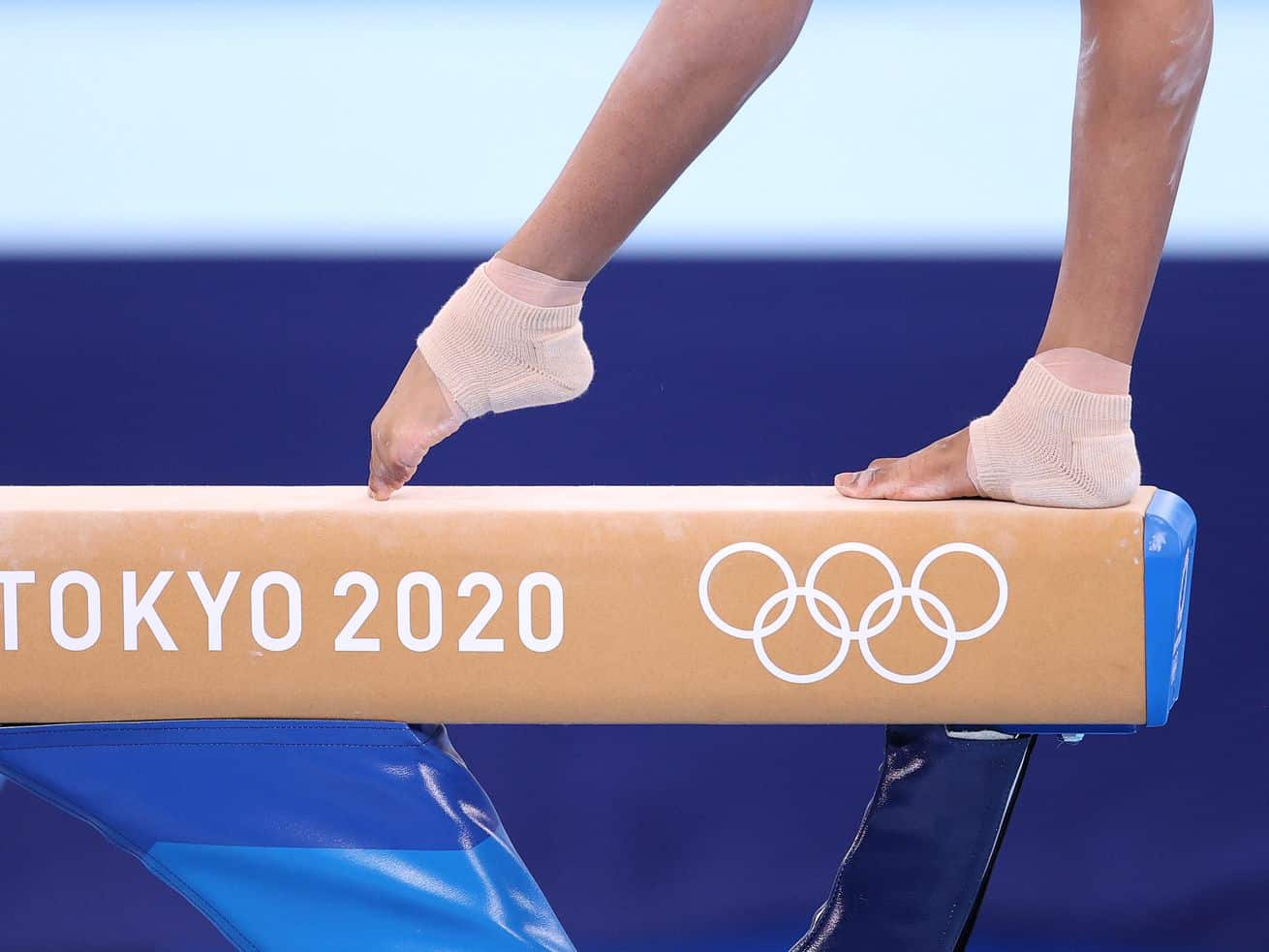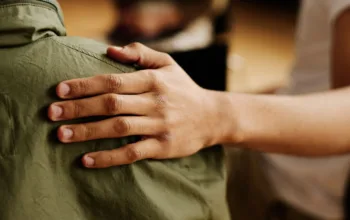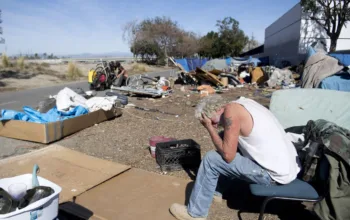Allegations of physical, emotional, and sexual abuse go way beyond Larry Nassar.
Three years ago, more than 150 women testified in court that Larry Nassar, a former doctor for USA Gymnastics and sports medicine physician at Michigan State University, had subjected them to sexual abuse in the guise of medical care.
Since then, he has been sentenced to more than a century in jail, USA Gymnastics has filed for bankruptcy, and a reckoning around the abuse of gymnasts has swept the world.
But that doesn’t mean the problems in gymnastics have gone away.
In the wake of Nassar’s arrest and trial, many current and former gymnasts were clear that his actions were part of something bigger: a widespread culture of physical and emotional abuse in the sport that left young athletes “conditioned to accept any and all treatment,” in the words of Jennifer Sey, a former elite gymnast and producer of the 2020 documentary Athlete A.
Gymnasts “are constantly belittled and berated” by coaches, Sey told Vox. “They’re stretched to the point of injury, they’re denied food, they’re fat-shamed. The child is really just beaten down.”
The Safe Sport Authorization Act, passed in 2018, has helped by authorizing a centralized body to investigate complaints across all Olympic sports. And gymnasts’ personal stories — detailed in court, in documentaries like Athlete A, and in the recent social media campaign #GymnastAlliance — have helped raise awareness, too. But as athletes from around the world prepare to compete in the Tokyo Olympics, many say American gymnastics has a long way to go before athletes are truly safe. The culture of a sport “doesn’t change instantly when laws change,” Sey said. “And this culture is so deeply embedded that it’s almost invisible.”
The culture of gymnastics has long supported and perpetuated abuse
The problem of sexual abuse in gymnastics first came to widespread public attention in 2016, when the Indianapolis Star reported that two former gymnasts had spoken out about abuses by Nassar. One of them, Rachael Denhollander, told the paper that Nassar had repeatedly abused her over five treatments ostensibly for lower back pain.
“I was ashamed,” she told the Star. “I was very embarrassed. And I was very confused, trying to reconcile what was happening with the person he was supposed to be. He’s this famous doctor. He’s trusted by my friends. He’s trusted by these other gymnasts. How could he reach this position in the medical profession, how could he reach this kind of prominence and stature if this is who he is?”
In the wake of the Star investigation, more and more gymnasts came forward to report abuse and assault by Nassar, and he was eventually arrested, tried, and convicted after pleading guilty to sexually abusing seven young athletes. His sentencing hearing in 2018, during which dozens of women delivered searing statements on the harms of his abuse, was a watershed moment for the sport.
But Nassar is only one person. He would not have been able to abuse young people for so long, many said, if sports authorities, including USA Gymnastics, had taken their duty to protect athletes more seriously. Indeed, even before the allegations against Nassar became public, USA Gymnastics had been accused of mishandling or dismissing reports of abuse, including a warning about a Georgia coach who went on to abuse gymnasts for seven years, according to the Star.
“You had one job,” four-time gold medalist Simone Biles said of USA Gymnastics in 2019. “You literally had one job and you couldn’t protect us.”
Established in 1963, USA Gymnastics has grown to represent more than 200,000 athletes and clubs. Before Nassar’s abuse came to light, the organization was one of the most high-profile governing bodies of any Olympic sport, boasting sponsorship deals with big companies like AT&T and Hershey’s, according to the Star. But as far back as the ’90s, the group was getting reports of sexual abuse that it failed to act on, the paper reported.
And beyond failing to investigate reports, many gymnasts have also said that the culture of gymnastics perpetuated physical and emotional abuse. Athletes have described being hit by coaches, being pushed to train while injured, and being repeatedly insulted, berated, and ridiculed. And many gymnasts have said they were subjected to constant body-shaming in a sport where being small and having little body fat is prized.
Across the sport, there has long been “an acceptance that this cruelty is what’s necessary to make champions,” Sey said. “It wasn’t, for many years, identified as abusive.”
But physical and emotional abuse by coaches has taken a toll, even causing some gymnasts to contemplate suicide. It has also made the athletes less likely to speak up when they faced sexual abuse by Nassar or others.
“If you have been starving yourself, and you feel really hungry, and you’re 18, and you’ve yet to menstruate because your body fat is so low, but you’re told every day that you’re a fat pig, you don’t trust your own perception of the world,” Sey said. And if you’re then subjected to abusive treatment by a respected doctor, you’re more likely to “accept that treatment, even if you think there might be something wrong or off about it.”
Moreover, cruel treatment by coaches also enabled Nassar to ingratiate himself with athletes by promising them kindness and empathy, some say.
“He comforted me and rubbed my leg and said everything was going to be O.K.,” Morgan White, a former gymnast, told the New York Times. “He was the good guy in a sport of cruel people. He had already assaulted me by then.”
The sport is changing, but progress is slow
Since athletes began speaking out about Nassar, legislators and sports authorities have instituted some reforms to help prevent abuse and hold perpetrators accountable. The 2018 Safe Sport Authorization Act, for example, gave one central governing body — the US Center for SafeSport — power to investigate reports of abuse across sports, including USA Gymnastics.
The idea was to stop letting USA Gymnastics and other sports organizations police themselves — and potentially look the other way to protect coaches who win medals — instead creating an independent group to do the job. SafeSport has the power to ban coaches and others from sports, and had issued 149 lifetime bans between 2017 and September 2018, according to the New York Times. The organization also maintains a database of people it has banned or suspended, as well as links to lists of those banned by individual sports federations like USA Gymnastics.
But SafeSport isn’t perfect. The center doesn’t have the same resources or legal authority as a prosecutor’s office, so it doesn’t have as much power to do things like gather evidence, Jodi Balsam, a professor at Brooklyn Law School who studies sports law, told Vox. And some say investigations have been drawn-out or ineffective. A report on SafeSport released in December by the Government Accountability Office found that most of the 3,909 cases it handled between February 2018 and June 2020 had been closed due to lack of jurisdiction, insufficient evidence, or other administrative reasons, rather than a formal finding. “You can set up the best protocols, the best policies, the best rules and standards, but they actually have to be implemented and effectuated in a way that serves the mission,” Balsam said.
Some have called for more resources to help SafeSport do its job better. But beyond that, some advocates say “there will never be adequate protections for these vulnerable athletes until the athletes themselves are empowered in some way,” Balsam explained. Otherwise, they have no leverage to push back on abusive behavior since their whole careers depend on “displaying total obedience to these coaches.”
One way to take back some power would be unionization, something Olympic athletes have been exploring in recent years. But that remains, for now, a far-off goal. In the meantime, athletes and their advocates have been working to change the culture of gymnastics so that abusive coaching is no longer tolerated.
For some, that starts with speaking up. Sey, who experienced an abusive coaching culture as an elite gymnast in the 1980s, helped spearhead the production of Athlete A. “I was really interested in not just exposing what happened in the Nassar case, but in connecting it to the larger culture of abuse,” Sey said.
Last year, the film helped inspire a wave of gymnasts around the world posting about their experiences on Instagram with the hashtag #GymnastAlliance.
In the wake of the hashtag, abuse investigations or inquiries were launched in the UK, Australia, the Netherlands, and Belgium, according to the New York Times. “We have a great chance at changing the sport because so many of us are finally being heard,” Lindsay Mason, a former Olympic gymnast from Britain, told the paper.
The Nassar case also inspired grassroots advocacy within the US, including the organization Army of Survivors, started in 2018 by survivors of Nassar’s abuse. The group has pushed for reforms across sports and at all levels, not just the most elite, including required background checks for coaches and supervision requirements so that coaches and doctors aren’t alone with young athletes. They are also encouraging gyms and clubs to disseminate a child athlete’s bill of rights, including the right to say “no” in unwanted situations and the right to speak up if something doesn’t feel right.
The goal is “to help athletes feel that they can speak up, that they have rights, and that they have to be centered, first and foremost,” Julie Ann Rivers-Cochran, executive director of the Army of Survivors, told Vox.
Advocacy by athletes is helping to change the sport’s culture, some say. The Nassar case, as well as athletes’ testimony in Athlete A or #GymnastAlliance, have led some coaches to reassess their own approach to the sport, Sey said. But still, “we’re a long way from where we need to be.”
Indeed, Biles, one of the most high-profile athletes at this year’s Tokyo Olympics, said earlier this year that if she had a daughter, she would not allow her to train with USA Gymnastics.
“I don’t feel comfortable enough, because they haven’t taken accountability for their actions and what they’ve done,” she said in a February interview. “And they haven’t ensured us that it’s never going to happen again.”
To truly ensure that, advocates and experts agree that gymnastics needs to shift from a win-at-all-costs mentality to one that prioritizes the needs of the young competitors who make the sport what it is. “Athlete well-being has to be more front and center,” Balsam said, “even if that sacrifices money and medals.”
Author: Anna North
Read More



